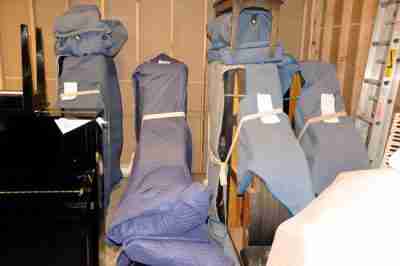How to Safely Move Your Grand Piano?
A1
9 November 2023
Recent Post
HOW CAN WE HELP?
10 Essential Tips for Safely Moving Your Grand Piano
Moving a grand piano is no ordinary task. These instruments are not only heavy but also delicate, requiring meticulous care during relocation. Whether you’re moving across town or to a new home, following these expert tips will help ensure your piano arrives safely and in tune.
1. Understand the Complexity of Piano Moving
Pianos are intricate instruments composed of thousands of parts. Their weight distribution, fragile components, and sensitivity to temperature and humidity make them challenging to move. Grand pianos, in particular, require disassembly and specialised handling to prevent damage.
2. Hire Professional Piano Movers
Engaging experienced piano movers is crucial. They possess the necessary equipment, knowledge, and techniques to handle your instrument safely. Professionals can navigate tight spaces, protect your property, and minimise the risk of injury or damage.
3. Gather the Right Equipment
If you choose to move the piano yourself, ensure you have:
A heavy-duty piano dolly or skid board
Moving blankets and padding
Straps and ropes
Protective gloves
Measuring tape
- Wheels
4. Prepare the Piano for Moving
Before moving, take the following steps:
Remove all detachable parts, such as the music stand and pedals
Secure the keyboard lid to prevent it from opening
Wrap the piano in moving blankets, focusing on corners and edges
Use tape to secure the blankets, avoiding direct contact with the piano’s surface
These precautions help prevent scratches and internal damage during transit.
5. Disassemble with Care
For grand pianos, disassembly is often necessary. Carefully remove the legs, pedals, and lyre, and wrap each component individually. Label each part to facilitate reassembly. Photographing the process can serve as a helpful reference.
6. Protect Against Physical Damage
Use multiple layers of padding to shield the piano from impacts. Pay special attention to vulnerable areas, such as corners and edges. Ensure all parts are securely wrapped and immobilised to prevent movement during transport.
7. Maintain Optimal Temperature and Humidity
Pianos are sensitive to environmental changes. Aim to keep the temperature between 18–24°C and humidity around 45–50%. Avoid exposing the piano to direct sunlight, heating vents, or damp areas. If moving between regions with different climates, consider using climate-controlled transportation.
8. Use Specialised Transportation Equipment
Employ professional-grade equipment, such as piano dollies, heavy-duty straps, and padded moving blankets. These tools are designed to handle the piano’s weight and dimensions, ensuring safe and secure movement.
9. Secure Proper Insurance Coverage
Before the move, review your insurance policies to ensure adequate coverage for your piano. Standard moving insurance may not fully cover high-value instruments. Consider obtaining specialised insurance that covers the full replacement cost or repair expenses.
10. Schedule Professional Retuning
After relocation, your piano will likely require retuning. Changes in environment and the moving process can affect its pitch and tonal quality. Arrange for a professional tuner to assess and adjust your piano within two weeks of the move.
Need Expert Assistance?
At A1 Piano Removals, we specialise in the safe and efficient relocation of grand pianos. Our experienced team uses specialised equipment and techniques to ensure your instrument arrives in perfect condition. Contact us today for a free quote and expert advice.
By following these ten essential tips, you can ensure the safe and successful relocation of your grand piano. Whether you choose to hire professionals or undertake the move yourself, careful planning and preparation are key.




